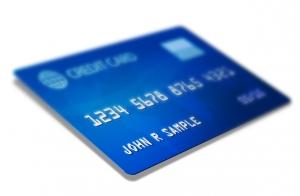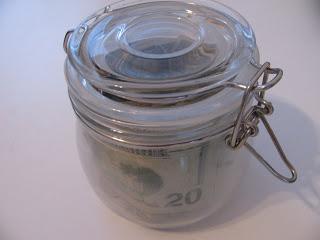 One of the most fundamental things all travelers have to deal with is money. How to get it, how to keep it, where to spend it, how to minimize the amount you spend. This list could go on and on. You may have your own tricks to increase your savings account over time for a trip, but all short-term and long-term travelers face the same hardships of money management if not addressing the situation from the right angle.
One of the most fundamental things all travelers have to deal with is money. How to get it, how to keep it, where to spend it, how to minimize the amount you spend. This list could go on and on. You may have your own tricks to increase your savings account over time for a trip, but all short-term and long-term travelers face the same hardships of money management if not addressing the situation from the right angle.In many instances, the most common money management and savings problems can be solved with just a few hours of time and small lifestyle improvements. The key is to not perform a drastic overhaul of your lifestyle just to travel, but rather several small changes to help make your goals achievable with far less pressure on yourself to succeed. To help, we put together our five favorite financial tips that will help all travelers find a bit of extra cash that can be used to see the world!
Tip #1 - Minimize Debt
Do you pay off that $20,000 student loan debt in full or only pay the monthly minimum while traveling? There is no right or wrong answer to this question. The key is that you work within your limits. If you factor in the monthly payments during and after your travels when making your budget, then you have nothing to worry about!
But what debts do you want to tackle before looking at traveling the world long-term? Well, for one, credit card debt. While student loan debts are not that bad if you plan on it, it is because of their low interest rates that paying the monthly balance is a more imaginable goal. But those who do not tackle credit card debt have another issue altogether - high interest rates. You may not be making money by paying off your credit card debt, but in the long run getting rid of high interest rate commitments will save money in the long term.
Don't think this method works? If you have $5,000 in credit card debt at 15% interest, you'll be paying an extra $750 for letting it sit for one year or $5,750 total. So pay it off, and spend that other $750 on the road!
Tip # 2 - Build Up a Safety Net
The biggest mistake we see when it comes to travel, especially in long-term scenarios, is forgetting to build a safety net. What is a safety net exactly? Well, it is a cushion of money to help catch you in an emergency situation. Whether that is a thousand dollars to cover an emergency that may pop up on the road or a small amount of money in the bank to return home on and start up life again, the safety net is there to keep you going if things don't always go your way.
For long-term travelers, we always like to recommend at least $1,000 to $2,000 kept aside for emergency situations as that is the typical price of a last minute one way ticket to just about anywhere in the world. For an amount to return on, this value may vary depending on what your goals are after the trip. Need to relocate and find new jobs? Probably want to err on the side of caution and keep several months worth of living expenses set aside. Have a lot of monthly bills? Be sure to factor those in too. Those returning to a job and same lifestyle as before may not have to return with as much money, but keep in mind the small bills that creep up over time. The last thing anyone wants is to return home from a long trip and start life back up in debt!
Tip #3 - Credit Card Perks
 We love opening credit cards for their frequent flier perks. In fact, there is just about a card for every perk you want. From hotels, to airline miles, to cash back, you really can get just about everything for having the right combinations of cards. Now, we do not advocate travel hacking 100% in the sense of opening two dozen credit cards and having a massive credit : debt limit on your name. Rather, we recommend the sensible approach. Find one or two cards that link up to one rewards program you are interested in, open them up, and transfer all the bonus perks to one account. You'll find that within months you'll have enough frequent flier miles to cover airfare for an entire trip around the world with only minimal spending and credit cards required! (Photo "Mock Credit Card" by highwing)
We love opening credit cards for their frequent flier perks. In fact, there is just about a card for every perk you want. From hotels, to airline miles, to cash back, you really can get just about everything for having the right combinations of cards. Now, we do not advocate travel hacking 100% in the sense of opening two dozen credit cards and having a massive credit : debt limit on your name. Rather, we recommend the sensible approach. Find one or two cards that link up to one rewards program you are interested in, open them up, and transfer all the bonus perks to one account. You'll find that within months you'll have enough frequent flier miles to cover airfare for an entire trip around the world with only minimal spending and credit cards required! (Photo "Mock Credit Card" by highwing)Don't think this method works? We opened two credit cards each and have banked nearly 300,000 airline miles in the last 6 months (40,000 already in our accounts from actual flying). When a one way ticket between North America and Europe in business class can be as little as 50,000 miles and $5 per ticket, we have enough for 6 of those. At over $4,000 a piece, that's $20,000 plus in savings. Or economy tickets at 30,000 miles and $1,000 a piece, that is $10,000 plus in savings on real tickets we would have bought in the first place!
Disclaimer - This tip is only recommended for those who are responsible with credit cards and never carry a monthly balance.
Tip #4 - Bank Online
Many times we do not consider to open a bank account online especially for travelling. With already having several bank accounts to our name at brick and mortar stores that have online counterparts, opening up with a branch that does not have a physical store in our neighborhood never seemed like a thing to do. But when we travel, most of our banks are tens of thousands away. With no access to a brick and mortar store, why should travelers be limited in their banking options? It is with this reason that travelers should re-evaluate their online banking choices prior to traveling, as a new store may end up saving you quite a lot of cash.
There are a number of reasons international travelers may like to open up an account especially for traveling, and all of them touch on the two most basic principles of travel decisions: money and convenience. The following are just a few of the dozens of reasons why a good bank can be in your best interest when traveling abroad:
- Foreign transaction fees get minimized (0-3%)
- Flat rate withdrawals may get reduced ($0-$10 per withdrawal)
- Extra security options protect your money in case of a bad situation
Tip #5 - The Secret Jar
 This method of financial savings is one of our favorites that we have developed in recent months. What is the secret jar? Well, the premise is quite simple. Hidden in our apartment I keep a small jar, like a piggy bank. It is not sitting out in the open like a standard piggy bank, and is in fact kept as far out of sight as I can possibly have it.
This method of financial savings is one of our favorites that we have developed in recent months. What is the secret jar? Well, the premise is quite simple. Hidden in our apartment I keep a small jar, like a piggy bank. It is not sitting out in the open like a standard piggy bank, and is in fact kept as far out of sight as I can possibly have it.Every time I take money out of my bank at an ATM, I will spend a set amount based on whatever reason I was taking the money out (say $5 for parking, $30 at a restaurant that doesn't take credit card, etc). But when removing money at an ATM, I am often limited to removing money in increments of $20. If I only spend five of that, I'm left with $15 burning a hole in my wallet. Given enough time, I will spend that money on sodas at work or going out to lunch and not on travel. But with a secret jar, that money is stored away before any temptations come along to help relieve me of the money. Once money goes in, it never comes out because it is so far removed from my standard behavior in the apartment. That is the beauty of the secret jar.
Every few months, it is worth while to empty your secret jar out back into your travel bank account such that it will never be touched until the most opportune travel moment. Given enough opportunities without cash, you may be tempted to dive into the jar to remove a few dollars rather than go to an ATM, which is why depositing the buildup frequently is a blessing in disguise for those with sticky fingers like myself.
Don't think this method works? We've already put away over $300 in the last 4 months by putting money in a secret jar! When looking at long-term trips, that may be a couple extra days (or more!) you otherwise may not have had. Not bad for a little reverse psychology and sneakiness.
While not all of these methods will get you large boosts in savings for traveling (other than a few rewards credit cards), the key is that these tips are all additive. Do Tip #5 for a year, you may get close to $1,000. Try out Tip #4, you may save a few hundred dollars over the course of your trip than with your current banking setup. Add these all together and you may get several extra days on the road for the smallest amount of effort. Worth it? You bet!
For all those who use money management tools to save for traveling, what are your favorite methods to build up cash for a trip? Do you use any that were featured on this list? What do you think of them?

